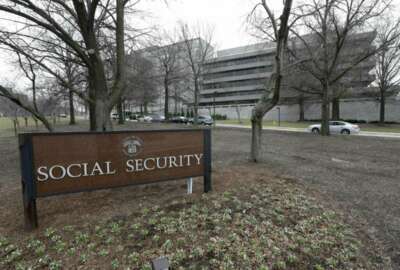As SSA IT modernization hits its stride, leadership launches a reorg of the CIO’s office
The Social Security Administration is renaming the Office of Systems to the Office of the CIO as part of its effort to push for more innovation and modernization.
The Social Security Administration is reorganizing how it manages and oversees technology. The agency is renaming the Office of Systems to the Office of the CIO as part of its effort to push for more innovation and modernization.
In an email to staff, which Federal News Network obtained, Kilolo Kijakazi, acting commissioner of Social Security, said the restructuring is a recognition about how technology has evolved over the last decade. She said the reorganization aims to align IT strategy and initiatives with business goals while driving innovation.
Current CIO Sean Brune, who has been in his role since October 2020, will move to a new position as the assistant deputy commissioner of operations, SSA’s largest component.
“We now need his expertise in operations to assist in addressing our service delivery challenges, particularly considering the budget constraints the agency may be facing in fiscal 2024,” Kijakazi said in her email.
Meanwhile, Patrick Newbold, the current deputy CIO and deputy director of digital transformation, will become the acting CIO until January, when he leaves to “pursue other career interests.”

Kijakazi said she will provide more details about the reorganization “shortly.” SSA also will soon post the job announcement for a permanent CIO.
An email to SSA’s press office seeking additional comment was not returned.
A former SSA executive familiar with the agency’s technology organization said the restructuring and renaming is a necessary rebranding effort to bring the agency more in-line with how industry manages and oversees IT.
“At SSA, the culture values the ‘deputy commissioner’ title like that for operations, budget, finance management, for the Office of Hearing Operations. If you’re a deputy commission in the SSA organization, it can be considered the culmination in an accomplished career. Without the deputy commissioner title, one cultural challenge will be for SSA executives and staff to know that the CIO title is equivalent to the deputy commissioner title,” said the former executive, who requested anonymity because they didn’t get permission from their current company to talk to the press. “Furthermore the next level down are assistant deputy commissioners, which needs to change to deputy CIO. Continuing the narrative, the next level from assistant deputy commissioner is associate commissioner and deputy associate commissioner and those can be associate CIO titles instead. The naming convention needs to ladder down through the organization to make this stick. To be culturally relevant, messaging and education has to occur as well from the commissioner’s office on down. It is all good as a rebranding effort. It can attract more people from the outside and hopefully bring more credibility to the IT Senior Executive Service roles.”
New SSA commissioner coming soon
The decision to reorganize the CIO’s office comes at an interesting time. The Senate is close to confirming Martin O’Malley to be the new SSA commissioner. The agency has been without a permanent one since July 2021 when President Joe Biden dismissed Andrew Saul.
Additionally, SSA seemingly has been making progress in modernizing legacy systems. It updated its IT strategic plan in early 2023 with a specific focus on customer experience and data centricity.
In an interview at the ACT-IAC ELC conference in November, Newbold said over the last few years the main focus has been on meeting business needs by modernizing business systems.
“The way we are approaching digital modernization is looking at what problems do we need to solve and improve. Then we are aligning our goals and our investments around doing that,” Newbold said. “For example, one of our priorities is multi-factor authentication. The executive order that came out as a mandate, but we necessarily didn’t resource for that. Fortunately, we were able to leverage the Technology Modernization Fund, and as a result, around 315 of our systems are on a good path to getting MFA-compliant.”
SSA won a $23.3 million award from the TMF Board in February.
Newbold said the TMF award is one way SSA is retiring technical debt. He said to accomplish goals like better system and data integration and changing the agency’s culture for service delivery is coming from the move to DevSecOps approach to software development.
“We recently, earlier this year, rolled out our enterprise scheduling solution, which is a scheduling capability for the public to be able to go online and make their own appointments if they needed to replace a card, for instance. That service that was not in place, until now,” he said. “In just about a year, we were able to roll it out to a subset of our regions, got really good feedback and made some changes. We iterated it, and now we rolled it out to all 50 states and that service is available for the public.”
Newbold said another example came out earlier this year too in the Boston region. SSA launched a new tool that lets citizens upload documents directly into their system after receiving an email link from a SSA employee.
“We rolled it out to the Boston region only because we wanted to test it out, get some feedback and we are in the process of making those adjustments. Then, we’ll roll out a little broader,” he said. “I think with that approach you get some concrete feedback. We’re going to be customer focused and centric, get that feedback, make iterations and roll it out.”
Newbold said he expects SSA over the next year to continue to improve this capability as it’s rolled out more broadly.
Copyright © 2025 Federal News Network. All rights reserved. This website is not intended for users located within the European Economic Area.
Jason Miller is executive editor of Federal News Network and directs news coverage on the people, policy and programs of the federal government.
Follow @jmillerWFED







